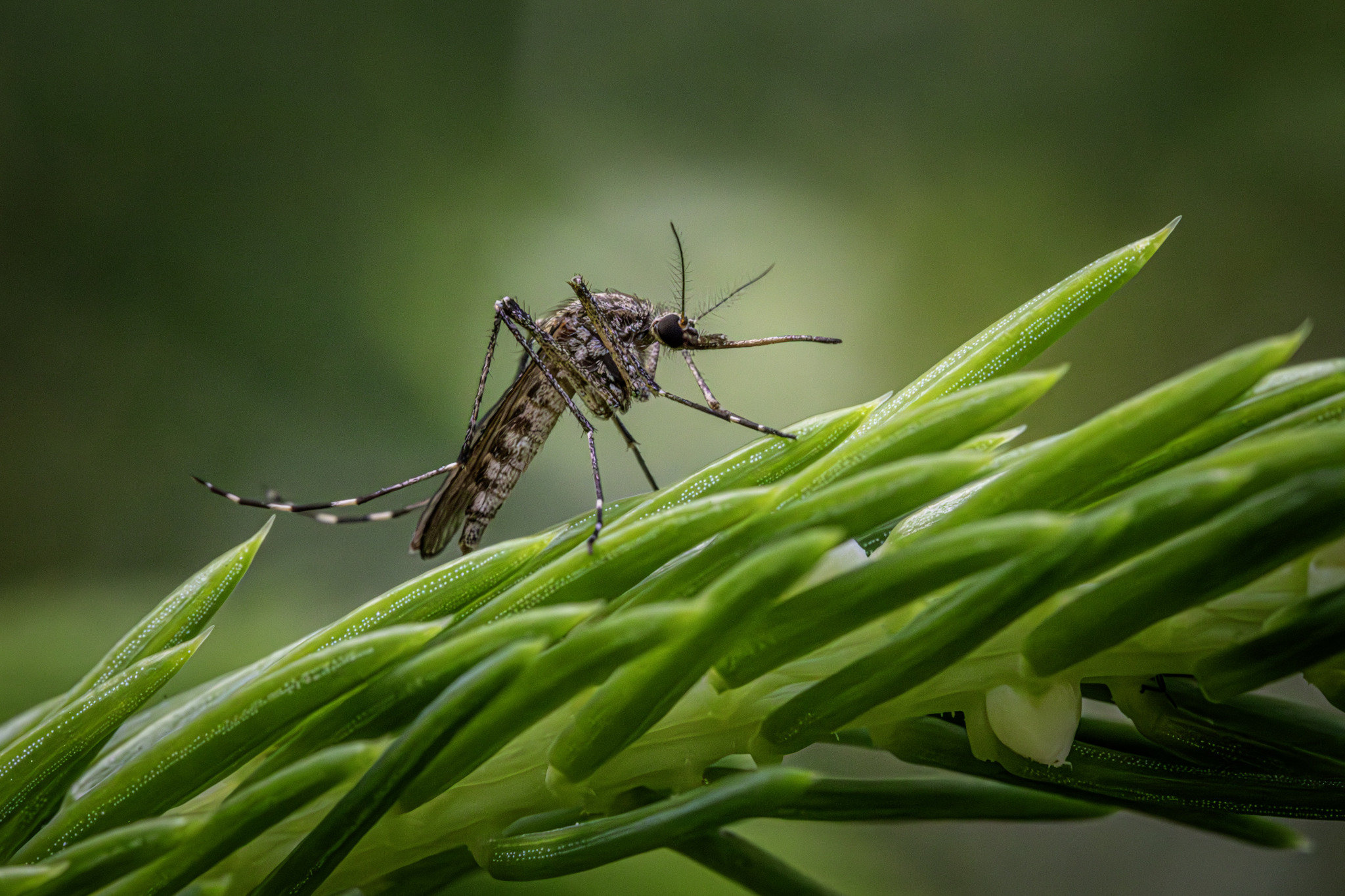The Inland Floodwater Mosquito (Aedes vexans) is a widespread and common mosquito species known for its biting habits and adaptability to various habitats. Here’s an overview of Aedes vexans:
Appearance:
- Size: Adult mosquitoes are relatively small, with a body length of about 4 to 7 millimeters.
- Coloration: They are generally brown with white or pale bands on their legs and abdomen. The thorax has a distinctive pattern of narrow white scales.
- Wings: The wings are clear with a fringe of scales.
Habitat:
- Preferred Habitats: This species breeds in temporary floodwater pools, such as those created by rain, river overflows, or melting snow. They are often found in low-lying areas, floodplains, and near bodies of water that experience seasonal flooding.
- Geographic Range: Aedes vexans is found worldwide, including in North America, Europe, Asia, Africa, and parts of Australia. It is highly adaptable and thrives in both urban and rural areas.
Behavior:
- Feeding: Both males and females feed on nectar, but females require a blood meal for egg development. They are aggressive biters and will feed on a variety of hosts, including humans, livestock, and wildlife.
- Activity: Aedes vexans is primarily crepuscular, meaning it is most active during dawn and dusk. However, they can also be active during the day in shaded or wooded areas.
- Flight: These mosquitoes are strong fliers and can travel several kilometers from their breeding sites in search of a blood meal.
Life Cycle:
- Eggs: Females lay their eggs on moist soil or vegetation in areas prone to flooding. The eggs can withstand desiccation and remain viable for several years until they are flooded.
- Larvae: Once the eggs are submerged in water, they hatch into larvae (wigglers) that feed on organic matter and microorganisms in the water.
- Pupae: After the larval stage, they develop into pupae (tumblers), which do not feed but are active and responsive to light.
- Adults: Adult mosquitoes emerge from the pupal stage, ready to mate and continue the life cycle. The entire development from egg to adult can take as little as a week under favorable conditions.
Ecological Role:
- Pollination: While mosquitoes are not major pollinators, both males and females contribute to the pollination of certain plants by feeding on nectar.
- Food Web: Larvae serve as food for various aquatic organisms, such as fish and other insect larvae. Adults are prey for birds, bats, and other predators.
Medical Importance:
- Disease Transmission: Aedes vexans is a vector for several diseases, including West Nile virus, and is capable of transmitting heartworm to dogs. However, it is less significant as a disease vector compared to other mosquito species like Aedes aegypti or Anopheles species.
Control and Prevention:
- Habitat Management: Reducing standing water around human habitation can help control populations. This includes draining puddles, emptying containers, and maintaining proper drainage systems.
- Chemical Control: Insecticides and larvicides can be used to reduce mosquito populations, especially in areas with high disease risk.
- Personal Protection: Using insect repellent, wearing long sleeves and pants, and using mosquito nets can help prevent bites.
Interesting Facts:
- Egg Resilience: The eggs of Aedes vexans can survive dry conditions for long periods, allowing the species to rapidly exploit temporary water sources when they appear.
- Wide Distribution: The species’ ability to breed in a variety of temporary water sources contributes to its widespread distribution and abundance.
In summary, the Inland Floodwater Mosquito (Aedes vexans) is a highly adaptable and widespread species known for its aggressive biting behavior and role in the ecosystem. Its capacity to transmit certain diseases underscores the importance of effective control and prevention measures to reduce its impact on human health.
Visited 845 times, 25 visit(s) today
Views: 1499
Subscribe to the newsletter:
